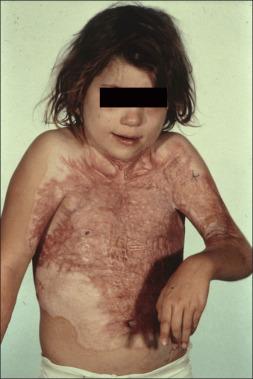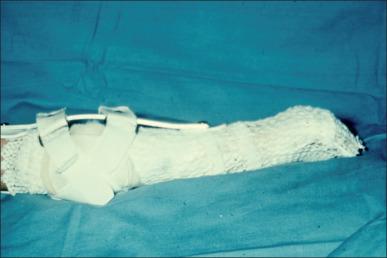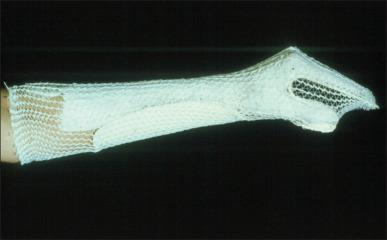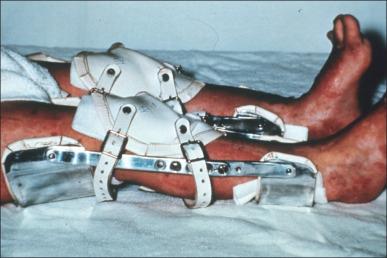Physical Address
304 North Cardinal St.
Dorchester Center, MA 02124
Burn injuries, regardless of the etiology, rarely involve a joint itself. However the joint function is often impaired because of burns. The joint problems and joint deformities noted in burn patients are mostly due to physical inactivity combined with limitation of joint movement because of scar contracture. The consequences of joint dysfunction are usually left for reconstruction later in the course of burn convalescence.
Folding bodily joints in flexion, a so-called posture of comfort, is a characteristic body posture seen commonly in a distressed individual. Although the exact reasons are not entirely clear, contraction of muscle fibers at rest and contractile force difference between the flexor muscle and the extensor muscle play an important role in the genesis of this body posture. The magnitude of joint flexion, furthermore, increases as an individual loses voluntary control of muscle movement, as frequently occurs in a burn victim ( Fig. 53.1 ). A prolonged period of physical inactivity associated with burn treatment and scar tissue contraction around the joint structures as the recovery ensues further impedes joint mobility.

A subtype of joint problem seen with major burn injuries is heterotopic ossification. This may affect any joint, although the elbow is by far the most frequently affected. Its initial symptoms are markedly increased pain with motion and hyperemia/swelling. A high index of suspicion is needed to differentiate this problem from background post-burn pain. The splinting and exercise/range-of-motion (ROM) care of patients with heterotopic ossification differ from standard burn rehabilitation, as noted later.
Burn treatment that requires a long period of bed confinement and physical inactivity as well as restriction of joint movement will lead to joint dysfunction. Consequently every bodily joint (i.e., the vertebral, mandibular, shoulder, elbow, wrist, finger, hip, knee, ankle, and toe) is susceptible to changes. Of various bodily joints involved, the contractural deformities of the shoulder (axilla), elbow, hip, and knee are relatively common. Factors such as a wide range of joint movement and asynchronous muscular control are characteristic features of these joints, and, when combined with a high vulnerability to burn injuries, are the probable reasons accounting for the high incidence encountered. A review of the records of 1005 patients treated at the Shriners Burns Hospital in Galveston, Texas, over 25 years, indicated that the elbow was the joint most commonly affected. There were 397 patients with elbow joint deformity followed by 283 knee contractures. There were 248 axillary deformities. Hip joint contracture was the deformity least encountered and was noted in only 77 patients ( Table 53.1 ).
| Joint Involved | n |
|---|---|
| Shoulder (axilla) | 248 |
| Elbow | 397 |
| Hip | 77 |
| Knee | 283 |
| Total | 1005 |
Although Cronin in 1955 demonstrated that the neck splint was effective in preventing recurrence of neck contracture following surgical release, the routine use of splinting for burn patients did not become a part of the regimen of burn wound care in Galveston until 1968, when Larson, the former Surgeon-in-Chief and Willis, the former Chief Occupational Therapist at the Shriners Burns Institute, began to fabricate splints with thermoplastic materials to brace the neck and extremities.
For more than three decades, a neck brace, a three-point extension splint, and a molded brace fabricated from thermoplastic materials—prototypes of devices used to splint the neck, elbow, and knee joints—were used in the management of burn patients at the Shriners Burns Hospital and the University of Texas Medical Branch Hospitals in Galveston, Texas. An “airplane splint” similarly made of thermoplastic materials was also used to splint the axilla when the use of other splinting and bracing techniques, such as a “figure-of-eight” bandage, were not feasible.
A study was conducted in 1977 to determine the efficacy of splinting across large joint structures such as the elbow, axilla, and knee by reviewing the records of 625 patients. There were 961 burns over these joints in this group of patients. Of these, 356 had involved the axillae, while 357 and 248 involved the elbow and knee joints, respectively. The incidence of axillary contractural deformities without splinting was 79%; with splinting this decreased to 26%. The subgroup able to wear splints for longer than 6 months had the lowest incidence of contracture at 15%, whereas discontinuation of splinting before 6 months identified a subgroup at high risk for splint failure, with 80% incidence (similar to a no-splint group). At the elbow, the incidence of contracture was 55% without splinting, decreasing to 12% with splinting, and further decreasing to 6% if splint usage was maintained for more than 6 months. At the knee, the incidence of contracture was 37% without splinting, decreasing to 3% with splinting, and further decreasing to 1% if splint usage was maintained for more than 6 months ( Table 53.2 ). Although splinting and bracing were shown to be effective in minimizing joint contracture, it was not entirely clear if restriction of joint movement would affect the quality of scar tissues formed across the joint surface. The effects were assessed by determining the frequency of secondary surgery performed in this group of patients. More than 90% of 219 individuals who did not use splinting/bracing required reconstructive surgery. In contrast, the need for surgical reconstruction in individuals who wore splints was 25%.
| Without Splint | WITH SPLINT | ||
|---|---|---|---|
| <6 months | >6 months | ||
| Shoulder | |||
| Severe/moderate | 137 | 24 | 23 |
| Mild/none | 37 | 6 | 129 |
| Elbow | |||
| Severe/moderate | 75 | 17 | 10 |
| Mild/none | 61 | 33 | 161 |
| Knee | |||
| Severe/moderate | 26 | 4 | 2 |
| Mild/none | 45 | 16 | 155 |
It is believed that inadequate physical exercise and lack of joint splinting and bracing, although allowing a patient to assume the posture of comfort, are the main factors responsible for the genesis of contractural deformities seen in patients during the acute phase of recovery from burn injuries. The deformities, furthermore, are made worse because of skin involvement and burn scar contracture. To minimize this undesirable consequence of burn injuries, proper body positioning and splinting of the joint structures must be incorporated into the regimen of burn treatment. The treatment should be implemented as soon as the patient's condition allows.
Although a supine position is preferred, the patient may be placed in a lateral decubitus position while confined in bed. The head should be placed in a neutral position with the neck slightly extended. For a patient placed in a supine position, neck extension is achieved by placing a small pad between the scapulae to facilitate scapular traction. A neck brace may be used if a patient is placed in other body positions.
The shoulder joint is kept at 90–120 degrees of abduction and 15–20 degrees of flexion. The position is not only useful in protecting the brachial plexus from traction injury but also effective in maintaining the stability of the glenohumeral joint. The position is best kept with the use of foam wedge, trough, and/or airplane splints. A figure-of-eight wrapping over a pad around the axilla, more frequently used for patients during the intermediate phase of recovery from injury, is effective in maintaining shoulder abduction. It is also useful in preventing excess shoulder flexion.
Elbow flexion is commonly seen in a distressed patient. Rigid flexion contracture of the elbow is a common sequela if the elbow is left unattended. With burns of the skin around the olecranon, exposure of the elbow joint is a common sequela if the elbow is allowed to contract freely. Maintaining the elbow in full extension therefore is essential. An extension brace ( Fig. 53.2 ) or a three-point extension splint across the elbow joint is effective for this purpose ( Fig. 53.3 ). If concern for heterotopic ossification develops, the elbow splint should be expediently changed to a functional position (around 90 degrees flexion) to avoid fusion of this joint in extension.


A contractural deformity involving a wrist joint is relatively common in individuals with hand burns that were not splinted properly. A cock-up hand splint should be applied to maintain a 30-degree wrist extension ( Fig. 53.4 ).

A contractural deformity of the hip is relatively uncommon unless the hip joint is allowed to remain flexed for a long period of time. Hip extension can be achieved by placing the patient in a prone position. In a supine position, 15–20 degrees of abduction is maintained with the use of a brace or anklet.
Flexion of the knee is another posture commonly assumed by a burned victim. Similar to the elbow, uncontrolled flexion of the knee joint will lead to exposure of the joint structure, especially in instances where the injuries involved the patella surface. Maintenance of the knee in full extension is, in this sense, an essential component of therapeutic regimen. This is accomplished by means of a knee brace or a three-point extension splint to assure a full extension of the knee joint ( Fig. 53.5 ).

Although exercising a burned victim is an integral part of burn therapy, it is seldom implemented until the resuscitative measures are completed and the condition of the patient is considered stable. The primary goal of exercise is to maintain the functional integrity of joint structures and muscle strength. This is attained by, in most instances, moving the joint manually and the muscles passively. Frequency and intensity of an exercise regimen, however, may vary depending on the magnitude of injury and the extent of joint involvement. The treatment, if possible, should be intensive and rendered as frequently as possible.
Become a Clinical Tree membership for Full access and enjoy Unlimited articles
If you are a member. Log in here